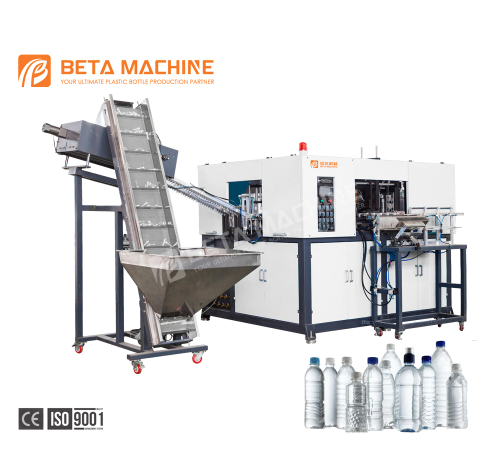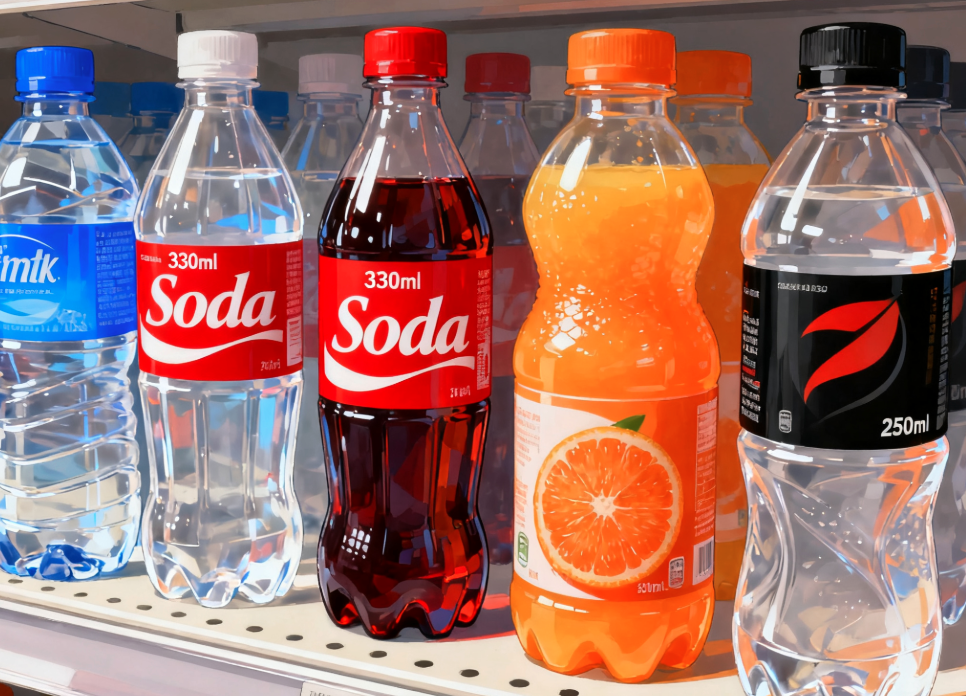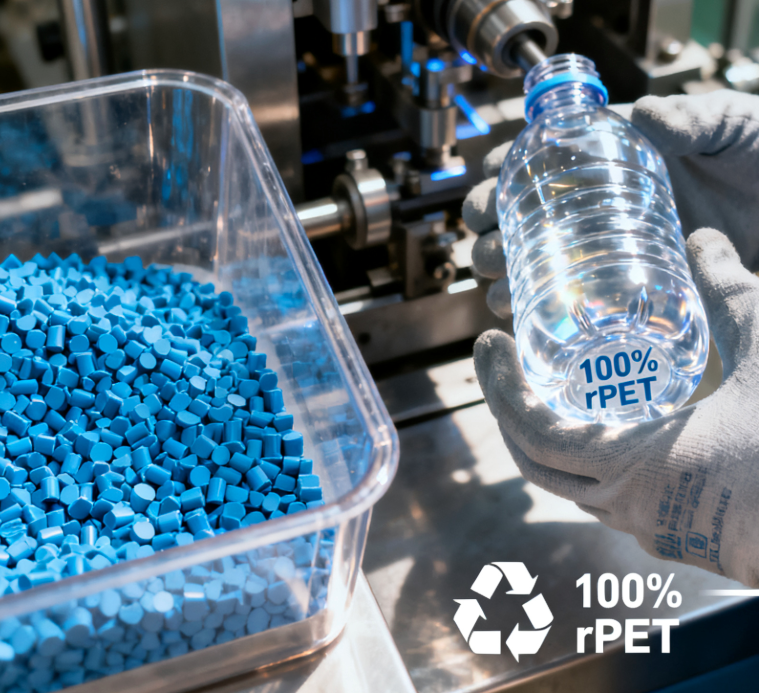Language
Views: 0 Author: Site Editor Publish Time: 2025-09-17 Origin: Site
Plastic bottles surround us. From water and soda to shampoo and household cleaners, most of them are made by one powerful technique: stretch blow moulding. At the heart of this process lies something called stretching blowout.
It may sound technical, but it’s actually simple. Stretching blowout is the stage where a heated plastic preform is stretched and blown into its final shape. Without this step, there would be no strong, lightweight, or clear bottles in the market today.
In this article, we’ll break down everything you need to know about stretching blowout—how it works, why it matters, its advantages, disadvantages, and where the stretch blow moulding machine fits into modern production.
Now let’s focus on the key step: stretching blowout. This crucial process occurs inside the moulding machine after the preform has been heated. During this stage, the preform undergoes a transformation that enhances its strength, clarity, and uniformity. Specifically, a rod stretches the preform vertically, aligning the plastic molecules and ensuring they are properly oriented. Simultaneously, compressed air blows the preform outward against the mould walls. This combination of stretching and blowing ensures that the plastic spreads evenly throughout the mould. The result is a bottle with enhanced durability, superior clarity, and a uniform shape. This process is fundamental to the production of high-quality, reliable plastic bottles used in various industries.
To better understand the mechanics of stretching blowout, let’s break it down into its key steps:
The process begins with the preform entering an oven chamber. Infrared heaters are used to warm the preform to a soft but solid state. This precise temperature control is essential to ensure the plastic is malleable enough for the stretching and blowing stages without melting or deforming. The heaters are carefully calibrated to achieve the optimal temperature range, typically around 250–270°C for PET. This ensures that the preform is ready for the next step in the process.
Once the preform is heated to the desired temperature, a mechanical stretch rod pulls it lengthwise. This stretching action aligns the plastic molecules, improving the strength and transparency of the final product. The alignment of the molecules creates a more uniform and stronger structure, which is critical for the durability of the bottle. This step is crucial for achieving the desired properties of the plastic, ensuring that the bottle can withstand impacts and maintain its shape over time.
With the preform stretched, high-pressure air (usually 25–40 bar) is introduced to inflate it. This air pressure forces the material to expand outward into the bottle mould, taking on the desired shape. The precise control of air pressure ensures that the plastic fills the mould evenly, resulting in a bottle with a uniform wall thickness. This step is where the preform truly transforms into a bottle, and the high-pressure air plays a vital role in achieving the final shape and structure.
After the preform has been inflated into the bottle shape, cold water channels inside the mould quickly cool the plastic. This rapid cooling process hardens the shape, ensuring that the bottle maintains its form once it is ejected from the mould. The cooling process is carefully timed and controlled to prevent any warping or deformation. Once the plastic has cooled and set, the bottle is ready to be ejected from the mould, completing the stretching blowout process.

Stretching blowout is more than shaping a bottle. It directly impacts the product’s quality.
| Feature | Without Proper Stretching | With Proper Stretching Blowout |
|---|---|---|
| Wall Thickness | Uneven, fragile | Even, durable |
| Transparency | Cloudy, inconsistent | Clear, attractive |
| Impact Resistance | Low | High |
| Material Efficiency | More plastic wasted | Uses less material |
| Neck Finish | Loose or uneven | Tight, reliable seal |
Material savings – thinner walls with no loss of strength.
High output – faster production cycles.
Lower defects – fewer rejected bottles.
Improved branding – clear, glossy packaging boosts shelf appeal.
Stretching blowout enables lightweight yet strong packaging. Industries rely on it daily:
Beverage bottles – water, soda, juices, energy drinks.
Personal care packaging – lotions, shampoos, cosmetics.
Household products – detergents, cleaners, cooking oils.
Pharmaceutical containers – safe storage for syrups and tablets.
Without this process, many of these containers would be heavier, more expensive, and less safe.

Stretching blowout offers several significant advantages that make it a preferred method for producing high-quality plastic bottles:
Durability: Bottles produced through stretching blowout are highly resistant to cracking and impact. The alignment of plastic molecules during the stretching process enhances the strength of the final product, ensuring that bottles can withstand everyday use without breaking or deforming.
Clarity: The stretching action aligns the plastic molecules, resulting in high transparency. This makes the bottles ideal for packaging clear liquids, as they allow consumers to see the contents easily. The improved clarity also enhances the visual appeal of the product.
Efficiency: Stretching blowout uses less material while maintaining strength. This efficiency helps reduce material costs and waste, making it a cost-effective choice for large-scale production. The process ensures that the plastic is distributed evenly, optimizing the use of materials.
Flexibility: The process is highly flexible and can be used to produce a wide range of bottle sizes and shapes. This versatility allows manufacturers to create custom designs that meet specific packaging needs, from small cosmetic bottles to large industrial containers.
High Speed: Stretching blowout machines are capable of producing thousands of units per hour. This high-speed production capability is essential for meeting the demands of large-scale manufacturing, ensuring that production can keep up with high-volume orders.
While stretching blowout offers many benefits, it also has some limitations and challenges:
High Tooling Costs: The molds used in stretching blowout are expensive to design and produce. This can be a significant upfront investment, especially for small production runs or businesses with limited budgets. The cost of molds can be a barrier to entry for some manufacturers.
Material Limits: Not all plastics are well-suited for stretching blowout. PET (polyethylene terephthalate) is the most commonly used material due to its excellent stretchability and durability. Other plastics may not stretch as effectively, limiting the materials that can be used in this process.
Energy Use: The process requires significant energy for heating the preform and using high-pressure air. This energy consumption can contribute to higher operational costs and environmental impact. Manufacturers need to consider energy efficiency and sustainability when implementing this process.
For very small production runs or unusual designs, other methods such as injection moulding or rotational moulding might be more cost-effective. These alternative methods can offer greater design flexibility and lower initial tooling costs, making them suitable for specific applications where stretching blowout may not be the best choice.
To understand its place in manufacturing, here’s a quick comparison:
| Process | Best For | Advantages | Disadvantages |
|---|---|---|---|
| Stretch Blow Moulding | Bottles, jars, lightweight packs | Strong, clear, efficient | High setup cost |
| Injection Moulding | Solid parts, caps, toys | Precise, detailed | Not efficient for hollow items |
| Extrusion Blow Moulding | Larger hollow products | Good for fuel tanks, drums | Less clarity, heavier walls |
| Rotational Moulding | Large complex shapes | Low-cost tooling | Slow, less precise |
Modern machines such as the stretch blow moulding machine and Automatic Bottle Blowing Machine play a crucial role in optimizing the stretching blowout process. These machines are equipped with advanced features designed to minimize defects and enhance production efficiency. They utilize:
Infrared heating zones that provide precise control over the preform temperature, ensuring the plastic is heated to the optimal state for stretching and blowing. Servo-driven rods that apply a consistent stretching force, aligning the plastic molecules uniformly and improving the strength and clarity of the final product. Pressure monitoring systems that ensure the correct air pressure is used during the blowout stage, preventing irregularities in the bottle shape. Cooling systems that facilitate rapid and uniform setting of the bottles, reducing the risk of warping or deformation.
This level of automation not only boosts the overall quality of the bottles but also reduces human error and operating costs, making the production process more efficient and cost-effective.
The stretching blowout process is also evolving to align with sustainability goals. Modern machines are being designed with features that support environmentally friendly practices:
Lightweighting: Manufacturers are focusing on using less plastic per bottle without compromising on strength or functionality. This reduces material usage and waste.
Recycled PET (rPET): Machines are being adapted to handle higher percentages of recycled content, promoting the use of sustainable materials and reducing the reliance on virgin plastic.
Energy-efficient systems: New ovens and compressors are designed to cut power use, making the production process more energy-efficient and reducing the overall carbon footprint.
Smart monitoring: AI-driven sensors are being integrated into machines to detect issues before defects occur, enabling predictive maintenance and minimizing downtime.

Stretching blowout is not just a technical step. It’s the foundation of modern packaging. From water bottles to cleaning supplies, it ensures products are safe, durable, and attractive.
While there are challenges—tooling costs, material limits, and energy use—the advantages far outweigh them for high-volume production. With advanced equipment like the Automatic Bottle Blowing Machine and innovations in sustainable plastics, stretching blowout will remain essential to global packaging.
For companies looking to scale bottle production efficiently, investing in a stretch blow moulding machine is one of the smartest moves. BETA provides cutting-edge moulding solutions, helping manufacturers achieve faster production, lower costs, and consistent quality at scale.